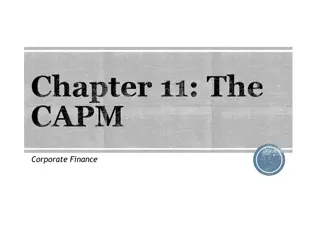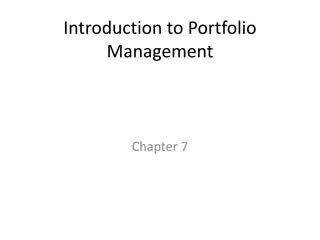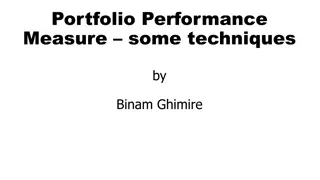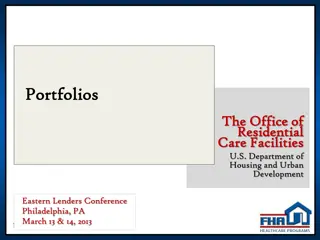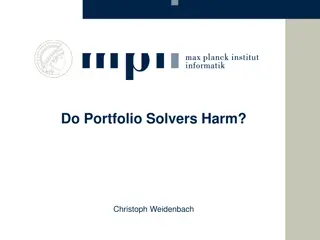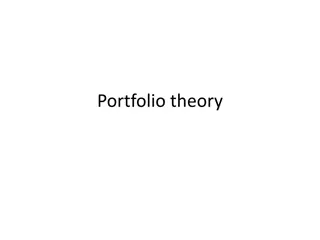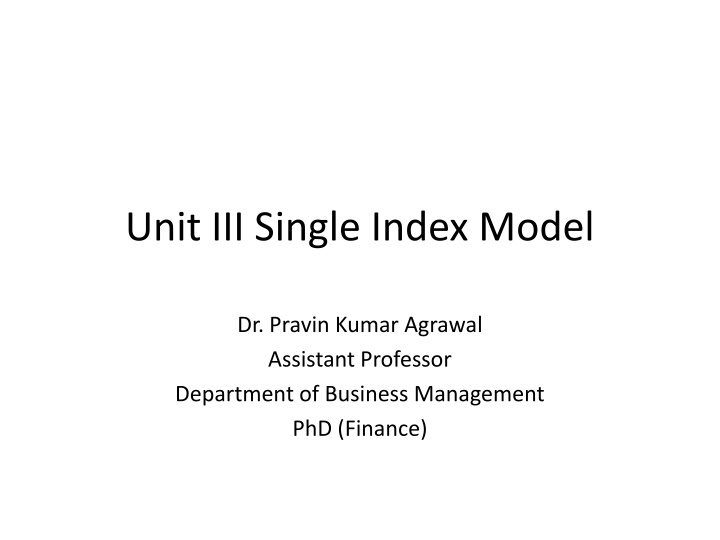
Single Index Model in Finance
Explore the Single Index Model (SML) in finance through the Capital Asset Pricing Model (CAPM), determining expected returns based on systematic risk (beta). Learn how the Security Market Line (SML) helps assess securities' valuations and why it differs from the Capital Market Line (CML). Discover the significance of SML in portfolio management and its role in efficient investing strategies.
Download Presentation

Please find below an Image/Link to download the presentation.
The content on the website is provided AS IS for your information and personal use only. It may not be sold, licensed, or shared on other websites without obtaining consent from the author. If you encounter any issues during the download, it is possible that the publisher has removed the file from their server.
You are allowed to download the files provided on this website for personal or commercial use, subject to the condition that they are used lawfully. All files are the property of their respective owners.
The content on the website is provided AS IS for your information and personal use only. It may not be sold, licensed, or shared on other websites without obtaining consent from the author.
E N D
Presentation Transcript
Unit III Single Index Model Dr. Pravin Kumar Agrawal Assistant Professor Department of Business Management PhD (Finance)
SML Security market line (SML) is the representation of the Capital asset pricing model. It displays the expected rate of return of an individual security as a function of systematic, non-diversifiable risk (its beta).
SML The SML essentially graphs the results from the capital asset pricing model (CAPM) formula. The x axis represents the risk (beta), and the y-axis represents the expected return. The market risk premium is determined from the slope of the SML. The security market line is a useful tool in determining whether an asset being considered for a portfolio offers a reasonable expected return for risk. Individual securities are plotted on the SML graph.
SML If the security's risk versus expected return is plotted above the SML, it is undervalued because the investor can expect a greater return for the inherent risk. A security plotted below the SML is overvalued because the investor would be accepting less return for the amount of risk assumed.
SML AND CML In CML the risk is defined as total risk and is measured by standard deviation, while in SML the risk is defined as systematic risk and is measured by . Capital market line is valid only for efficient portfolios while security market line is valid for all portfolios and all individual securities as well. CML is the basis of the capital market theory while SML is the basis of the capital asset pricing model








